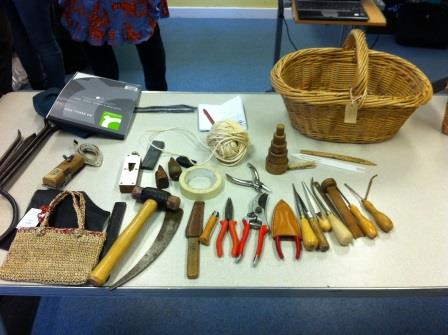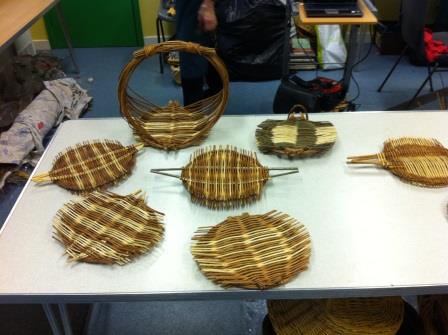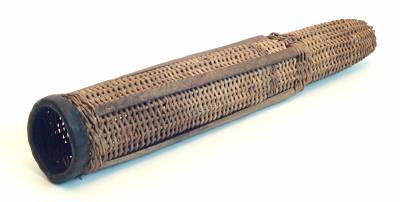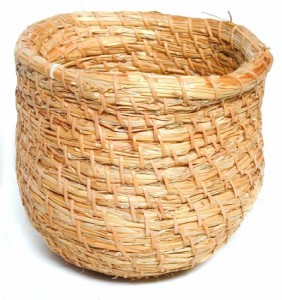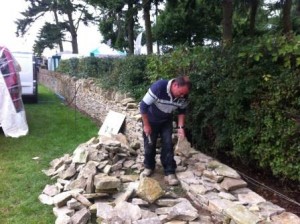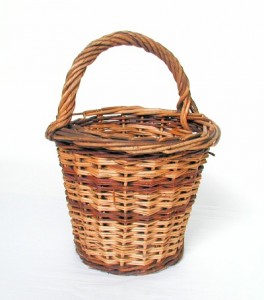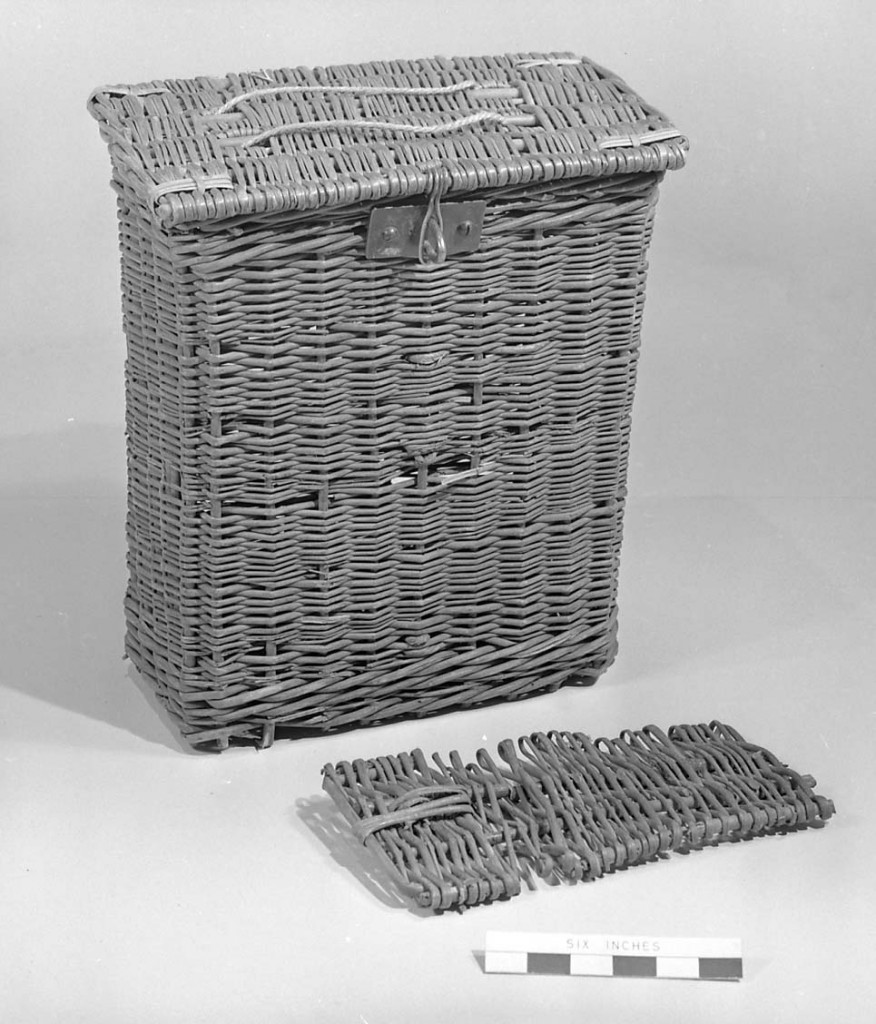
MERL 64/200. This is one of the High Priority baskets. Although we have some information on the materials it’s made from, we have no details about its construction. It is thought that this basket may have been used for samples by the Water Board.
We’re nearly ready to welcome the ten basketmakers to MERL next week to take part in the two-day study visit as part of the Stakeholders project. I’m very excited that it’s finally happening – it seems an awfully long time since July when we heard the project was going ahead!
I’ve nearly completed all the preparations for the session. I’ve finally managed to organise the baskets into high, medium and low priority categories, and I’ve created a recording form which I hope is easy to use and reasonably consistent with forms that have been used in the past. For each basket, I have printed out the current Adlib record and photocopied the form onto the back – this way, we’ve got ready access to the information we already know about each basket and can easily identify the gaps that need filling. There are still a few remaining bits and pieces to do – like making sure there’s room in the Museum store for us all, getting the first few baskets out, and making sure we have enough pencils – but I think we should be good to go on Tuesday morning! I think it’s going to be a very busy two days, but hopefully I’ll find time next week to blog about how it all went.
Although it’s going to be very intense, I think that in some ways the study visit is the easy part of the project. I think the challenging part will be inputting all the information we’ve gathered into the catalogue in a logical, consistent, searchable and user-friendly way (which will hopefully tie into the work I’ve been doing with thesaurus terms as part of the Countryside21 project). I’m also hoping to do some follow-up research in the MERL Library and Archives where necessary. Then there’s the commissions aspect of Stakeholders still to think about, arranging photography of the baskets which currently have no photos, and putting together some form of exhibition from the project – be it online, or in the form of banners for a pop-up or temporary exhibition. But challenging or not, I’m really looking forward to getting stuck in!


